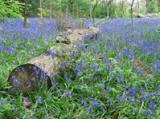Saltwells Local Nature Reserve - Dudley
| |||||||||||||||||||||||
Lady Dudley planted Saltwells Wood in the eighteenth century to hide the scars of coal mining. The descendants of the Oak and Beech still survive and are home to many species of woodland bird, such as Treecreeper, Jay and Great Spotted Woodpecker. Wild Garlic and Anemones are found in the wood together with carpets of Bluebells. Within the wood is Doulton's Claypit with spectacular cliffs showing a section through the rocks of the Middle and Lower Coal Measures. Abandoned in the 1940's, the claypit has been reclaimed by nature and now has unusual plants including hundreds of Common Spotted and Southern Marsh Orchids. South of the wood, around the chainmakers' hamlet of Mushroom Green, is an area of scrubland and meadow, plus a large reedswamp which provides a safe refuge for winter birds like Water Rail, Snipe and Teal. North of the woodland is the gorse covered Netherton Hill, opencast for coal until the 1960s, but now home to Linnets and Reed Buntings. Further north still is an area of restored coal mining known as Cinder Bank. Sixteen species of dragonfly are found here on the Daphne Pool, making this one of the best sites for these insects in the West Midlands. Recently presented with a Centre of Excellence award by the Forestry Authority for woodland management, Saltwells has long been a model urban reserve for Europe under UNESCO's Man and the Biosphere project.
| |||||||||||||||||||||||
